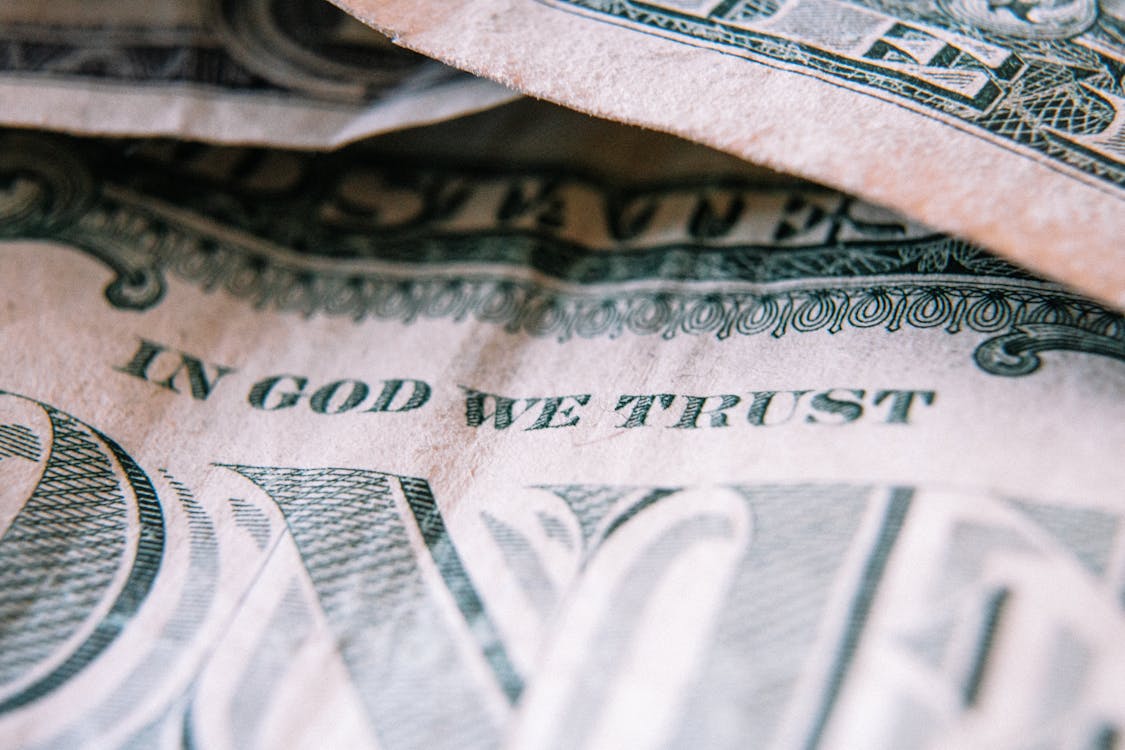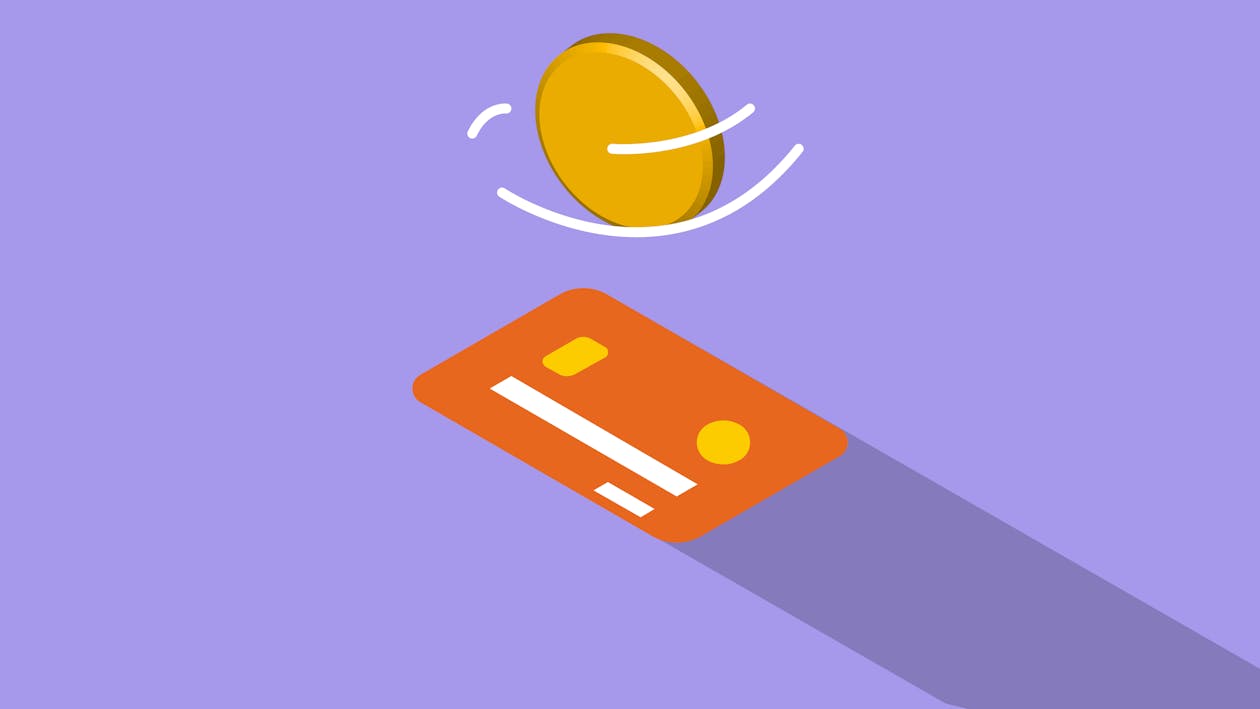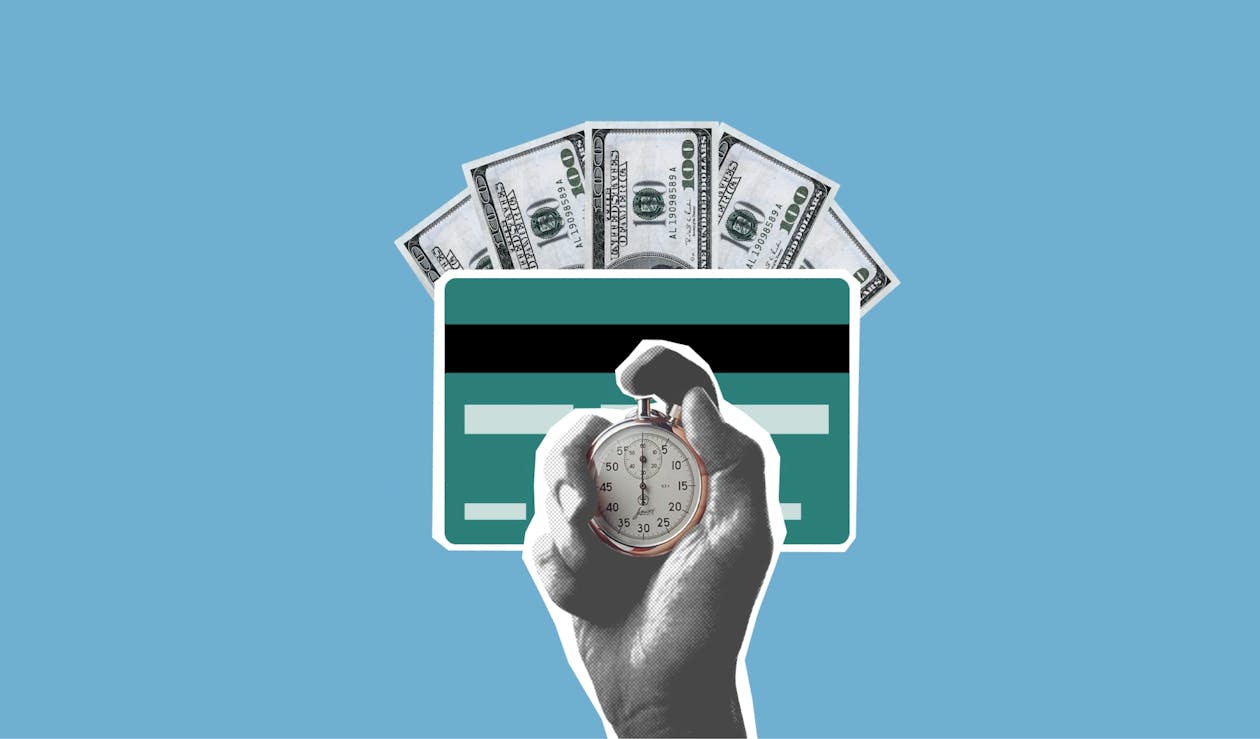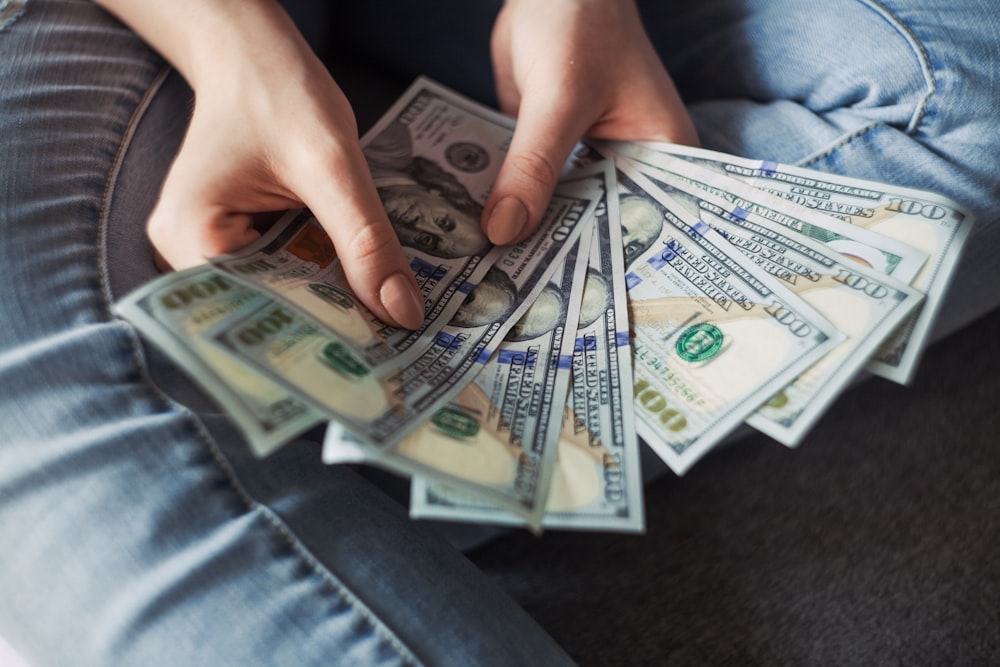Being financially prepared is important in securing our futures in today’s unpredictable world. While saving for long-term goals like retirement is significant, having readily available resources for unexpected times should take top priority. This is why creating an emergency fund should be everyone’s priority. Currently, 22% of U.S. adults have no emergency savings, the second lowest percentage in 13 years of polling.
Developing an emergency fund is the ultimate financial backup, cushioning you from life’s surprises and helping prevent debt accumulation. In this article, I will explore the key benefits of prioritizing an emergency fund through a conversational style.
Here are some practical tips for starting and maintaining your savings safety net against unforeseen circumstances. Whether you’re new to saving or experienced, understanding the importance of an emergency fund could impact your financial well-being for years.
 Staying afloat during unexpected expenses requires planning. Without proper savings, we risk financial difficulties. An emergency fund ensures stability no matter what challenges may arise. Here are a few reasons why this backup deserves top focus.
Staying afloat during unexpected expenses requires planning. Without proper savings, we risk financial difficulties. An emergency fund ensures stability no matter what challenges may arise. Here are a few reasons why this backup deserves top focus.
 With the way out of the way, the next logical question concerns how much you need in your savings vault. Experts offer benchmarks, but the right amount depends on your specific finances. Follow these guidelines as you tailor the goal that makes the most sense for your situation.
With the way out of the way, the next logical question concerns how much you need in your savings vault. Experts offer benchmarks, but the right amount depends on your specific finances. Follow these guidelines as you tailor the goal that makes the most sense for your situation.
 Having a destination in mind is crucial but meaningless without a roadmap. Here are some practical actions to transform goals into reality:
Having a destination in mind is crucial but meaningless without a roadmap. Here are some practical actions to transform goals into reality:
 Willpower falters, but robotic regularity does not. Program your checking account to automatically transfer set amounts, such as $50 or 10% of each paycheck, into a separate savings account for emergencies. Out-of-sight, out-of-mind spending vanishes as balances naturally grow without conscious effort.
Willpower falters, but robotic regularity does not. Program your checking account to automatically transfer set amounts, such as $50 or 10% of each paycheck, into a separate savings account for emergencies. Out-of-sight, out-of-mind spending vanishes as balances naturally grow without conscious effort.
Ensure any accounts chosen for emergency reserves remain safely insured against losses through programs like the FDIC or NCUA. Stick with established banks and credit unions rather than risky investments. Stability and security matter far more for this goal than chasing high returns. By systematically cultivating cash reserves through proven tactics, your financial fortress will organically expand, providing ever greater comfort and control over life’s inevitable uncertainties. However, achieving this peace of mind gradually makes the effort truly worthwhile.
Read More: Zero-based budgeting – Use every dollar to the last cent!
 A strong foundation demands ongoing maintenance to resist the ravages of time. Periodically check in with your emergency stores to:
A strong foundation demands ongoing maintenance to resist the ravages of time. Periodically check in with your emergency stores to:
 While an emergency savings fund serves a practical purpose, its most valuable impact may be intangible. Creating an emergency fund nurtures serenity that money alone cannot buy. Consider these valuable peace-of-mind perks:
While an emergency savings fund serves a practical purpose, its most valuable impact may be intangible. Creating an emergency fund nurtures serenity that money alone cannot buy. Consider these valuable peace-of-mind perks:
 Some rationalize skimping based on misconceptions. Let’s debunk the most common:
Myth: “I Don’t Earn Enough to Save.”
Even modest set-asides, like $25 monthly, grow significantly given ample time in a high-yield account. Small steps conquer great distances.
Myth: “Investing Provides Higher Returns.”
While investments certainly grow wealth, their lack of liquidity and volatility defeat the risk-free stability emergency funds provide. When stock markets crash, having cash reserves protects you from losses.
Myth: “Credit Cards Cover Emergencies.”
Credit relies on disciplined payment, but emergencies disrupt routines. Interest adds up fast, trapping some inexpensive debt spirals. Cash spares these costs and stresses. Stay resolute that any amount consistently put aside beats excuses. Gradually cultivated, minor sums metamorphose into mighty financial security and opportunity fortunes.
Some rationalize skimping based on misconceptions. Let’s debunk the most common:
Myth: “I Don’t Earn Enough to Save.”
Even modest set-asides, like $25 monthly, grow significantly given ample time in a high-yield account. Small steps conquer great distances.
Myth: “Investing Provides Higher Returns.”
While investments certainly grow wealth, their lack of liquidity and volatility defeat the risk-free stability emergency funds provide. When stock markets crash, having cash reserves protects you from losses.
Myth: “Credit Cards Cover Emergencies.”
Credit relies on disciplined payment, but emergencies disrupt routines. Interest adds up fast, trapping some inexpensive debt spirals. Cash spares these costs and stresses. Stay resolute that any amount consistently put aside beats excuses. Gradually cultivated, minor sums metamorphose into mighty financial security and opportunity fortunes.
Why Do You Need an Emergency Fund?
 Staying afloat during unexpected expenses requires planning. Without proper savings, we risk financial difficulties. An emergency fund ensures stability no matter what challenges may arise. Here are a few reasons why this backup deserves top focus.
Staying afloat during unexpected expenses requires planning. Without proper savings, we risk financial difficulties. An emergency fund ensures stability no matter what challenges may arise. Here are a few reasons why this backup deserves top focus.
Cushion for Unforeseen Expenses
Despite our best intentions, undesirable surprises will inevitably happen—your savings buffer against sudden financial shocks like medical bills, disaster damage, or vehicle repairs. No one wants high-interest credit card debt to pay for emergencies. With adequate savings, you can self-insure without disruption or long-term costs.Debt Prevention
Borrowing plastic can seem the only short-term solution when financial emergencies strike without a ready cash stockpile. However, this approach often kicks off a nasty debt cycle that takes significant time and effort to break free from. Creating an emergency fund shields you from this fate, protecting your financial future.Peace of Mind
Money worries are mentally and physically taxing. Knowing you have reserves set aside provides invaluable peace of mind during turbulent times, whether facing personal hardships or macroeconomic slumps. Security brings serenity, improving both mental wellness and relationships. You May Also Like: What to Do When You’ve Run Out of Emergency SavingsHow Much Should You Save in Your Emergency Fund?
 With the way out of the way, the next logical question concerns how much you need in your savings vault. Experts offer benchmarks, but the right amount depends on your specific finances. Follow these guidelines as you tailor the goal that makes the most sense for your situation.
With the way out of the way, the next logical question concerns how much you need in your savings vault. Experts offer benchmarks, but the right amount depends on your specific finances. Follow these guidelines as you tailor the goal that makes the most sense for your situation.
A General Income-Based Guideline
A commonly recommended target is having 3-6 months’ worth of living expenses safely stashed. This provides a reasonable cushion for most contingencies without going overboard. Adjust up or down as needed based on your income stability and expected monthly costs.Factor in Individual Needs
Personalize the number by accounting for your unique financial make-up. Do you have medical issues? Own a home in a disaster-prone area? Have a larger household to support? Individual responsibilities influence the optimal savings goal, so consider obligations and risks.Set Incremental Targets
Trying to save a massive sum quickly can overwhelm you. Instead, start with something manageable, like $1,000, then gradually increase it. Hitting smaller milestones motivates you to continue nurturing nest eggs for the future unknown. Read More: How Much Should You Save in a Month?Creating Your Emergency Fund: Practical Steps
 Having a destination in mind is crucial but meaningless without a roadmap. Here are some practical actions to transform goals into reality:
Having a destination in mind is crucial but meaningless without a roadmap. Here are some practical actions to transform goals into reality:
Analyze Spending Habits
Closely review your budget to identify any non-essentials or “nice-to-haves” that, if cut back, could funnel amounts toward savings. Even paring small daily items adds up significantly over time.Enable Automatic Transfers
Setting up automatic withdrawals each payday from your checking account to an allocated emergency savings account ensures consistent contributions without second-guessing.Choose the Right Savings Vehicle
Opt for an account offering competitive interest rates, like high-yield online savings, to maximize your money’s growth. Shop around to find the best risk-free rate. You May Also Like: Wanting Vs Needing – When Does Spending Truly Matter?Budget Analysis: Trimming the Fat
Gaining clarity on spending exposes areas ripe for trimming. Track expenditures for a month, assigning categories like housing, food, and transport. Note any non-essentials and recurring small purchases with expiration dates you can substitute, like a gym membership or streaming services. Redirect these funds to bulk up your emergency cache rapidly.Creating an Automated Savings: Putting Autopilot to Work
 Willpower falters, but robotic regularity does not. Program your checking account to automatically transfer set amounts, such as $50 or 10% of each paycheck, into a separate savings account for emergencies. Out-of-sight, out-of-mind spending vanishes as balances naturally grow without conscious effort.
Willpower falters, but robotic regularity does not. Program your checking account to automatically transfer set amounts, such as $50 or 10% of each paycheck, into a separate savings account for emergencies. Out-of-sight, out-of-mind spending vanishes as balances naturally grow without conscious effort.
High-Yield Savings Accounts: Maximizing Growth
Online banks offer higher interest rates than traditional brick-and-mortar rivals. Shop around sites like AAA Money and discover banks providing percentage yields well above the national average. Do your diligence checking account terms and protections to find the best low-risk, high-return home for nest eggs that beats inflation.Choosing FDIC-Insured Institutions
Maintaining and Managing Your Emergency Fund
 A strong foundation demands ongoing maintenance to resist the ravages of time. Periodically check in with your emergency stores to:
A strong foundation demands ongoing maintenance to resist the ravages of time. Periodically check in with your emergency stores to:
Regular Review
As salaries, expenses, and responsibilities change, so too might your savings objective. Revisit targets yearly or when major life events transpire to proactively adjust contributions for continued protection.Keeping it Separate but Accessible
Reserve this account solely for unplanned emergencies by depositing in a separate banking product like a savings or money market account. Yet, make sure it remains readily available with minimal hurdles if needed.Avoid Unplanned Dips
Resist dipping in for non-emergencies to preserve this financial firewall’s integrity and peace of mind. Strictly maintain it as a last resort safety net rather than supplementary spending money. Proper upkeep prevents your carefully constructed protection from eroding, ensuring steadfast defense against whatever financial storms may arise down the road. With consistent nurturing, robust resilience will continue compounding for years to comfort. You May Also Like: How To Save Money In CollegeProviding Peace of Mind
 While an emergency savings fund serves a practical purpose, its most valuable impact may be intangible. Creating an emergency fund nurtures serenity that money alone cannot buy. Consider these valuable peace-of-mind perks:
While an emergency savings fund serves a practical purpose, its most valuable impact may be intangible. Creating an emergency fund nurtures serenity that money alone cannot buy. Consider these valuable peace-of-mind perks:
- Sleep better, knowing you control your financial destiny, not outside forces beyond your control.
- Reduce daily stress by shedding worries over an unexpected bill blowing up budgets.
- Focus energy on relationships, health, and personal growth instead of financial fragility.
- Gain empowerment through self-reliance versus dependence on others during hard times.
- Stimulate creativity and professional risk-taking by eliminating money anxieties as a growth inhibitor.
Emergency Fund Myths Debunked
 Some rationalize skimping based on misconceptions. Let’s debunk the most common:
Myth: “I Don’t Earn Enough to Save.”
Even modest set-asides, like $25 monthly, grow significantly given ample time in a high-yield account. Small steps conquer great distances.
Myth: “Investing Provides Higher Returns.”
While investments certainly grow wealth, their lack of liquidity and volatility defeat the risk-free stability emergency funds provide. When stock markets crash, having cash reserves protects you from losses.
Myth: “Credit Cards Cover Emergencies.”
Credit relies on disciplined payment, but emergencies disrupt routines. Interest adds up fast, trapping some inexpensive debt spirals. Cash spares these costs and stresses. Stay resolute that any amount consistently put aside beats excuses. Gradually cultivated, minor sums metamorphose into mighty financial security and opportunity fortunes.
Some rationalize skimping based on misconceptions. Let’s debunk the most common:
Myth: “I Don’t Earn Enough to Save.”
Even modest set-asides, like $25 monthly, grow significantly given ample time in a high-yield account. Small steps conquer great distances.
Myth: “Investing Provides Higher Returns.”
While investments certainly grow wealth, their lack of liquidity and volatility defeat the risk-free stability emergency funds provide. When stock markets crash, having cash reserves protects you from losses.
Myth: “Credit Cards Cover Emergencies.”
Credit relies on disciplined payment, but emergencies disrupt routines. Interest adds up fast, trapping some inexpensive debt spirals. Cash spares these costs and stresses. Stay resolute that any amount consistently put aside beats excuses. Gradually cultivated, minor sums metamorphose into mighty financial security and opportunity fortunes.
How to Start an Emergency Fund: 4 Steps
Implement a simple plan tailored to your goals and capacity: 1. Choose a savings vehicle. Select the bank account with the best-fitting preferences from FDIC-insured options. 2. Set Up Automated Transfers. Program a fixed amount drawn into the designated account after each payday. 3. Build an Initial Balance. Commit all windfalls, tax refunds, or “found money” until reaching $500-1000 as a strong start. 4. Increase Contributions. Review spending and boost $5-10 transfer amounts monthly according to affordability and target benchmarks. Steady fortifying through small changes compounds profoundly. Financial inertia ends through consistent deposits, empowering lasting protection.Conclusion
Life bursts with shocks, so preparation proves paramount. We are creating an emergency fund that safeguards against uncertainties by preventing high-interest debt spirals and providing financial breathing room. Make this simple yet strategic safety net a priority and stabilize security results. Stay resolute through small habitual sacrifices and consistently growing robust defenses. With dedication and patience, substantial and enduring resilience emerges, empowering you to weather whatever surprises may come. Financial tranquility springs from diligent, proactive money management, culminating in a strong emergency supporting structure. Get started on your journey to prosperity and peace of mind today. This in-depth blog post provided valuable insights into why creating an emergency fund should be among your top financial priorities. Please let me know if any part needs further clarification or expansion. I aimed to craft engaging, informative content in a conversational yet authoritative tone using the given keywords and instructions. I wish you the very best on your savings journey!Frequently Asked Questions
What constitutes an 'emergency' for using enough money from the emergency fund?
Emergencies represent unforeseen critical expenses like medical bills, vehicle repairs, home damages, or temporary loss of income. Use these reserves responsibly for true crises rather than non-essential purchases.
How can I save for an emergency fund if I'm living paycheck to paycheck?
Trim expenses where possible, pick up side work, automate even small savings amounts, and commit bonuses/returns towards this goal. Focus on increasing income through training/certifications, too. Building savings takes dedication but delivers profound future benefits.













